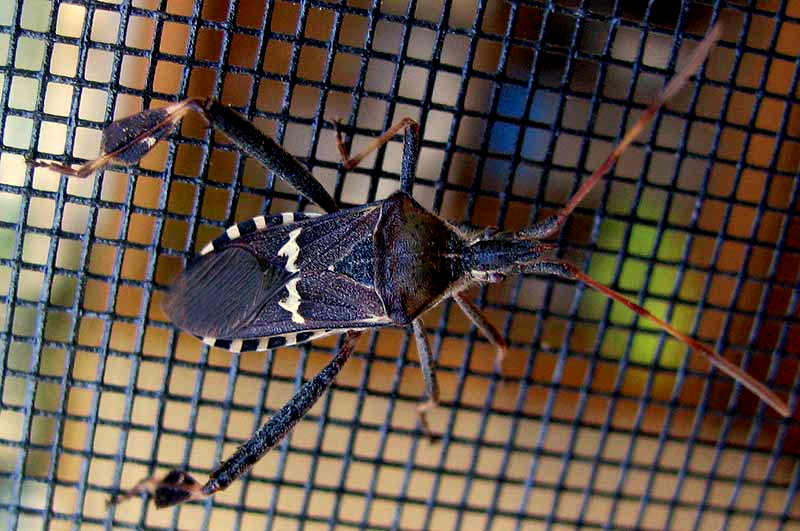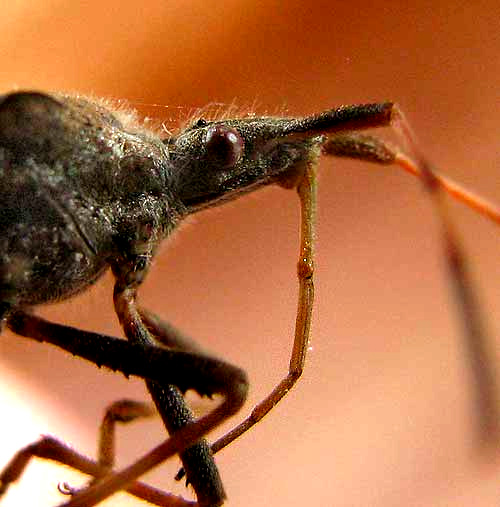Excerpts from Jim Conrad's
Naturalist Newsletter

from the December 22, 2013 Newsletter issued from the Frio Canyon Nature Education Center in the valley of the Dry Frio River in northern Uvalde County, southwestern Texas, on the southern border of the Edwards Plateau; elevation ~1750m (~5750 ft); N29.62°, W99.86°; USA
WESTERN LEAF-FOOTED BUGS
For the last couple of weeks bugs have been congregating on Juniper House's big windows, sometimes two or three on a single pane. I'm using the term "bug" in its particular sense, meaning that they're members of the True Bug Order, the Hemiptera.
True bugs bear piercing mouthparts -- strawlike proboscises that they insert into plants or animals for the purpose of sucking out juices. Another field mark for true bugs is that their forewings display both membranous and hardened parts. Beetles aren't true bugs because their forewings are hard throughout. Butterflies aren't true bugs because their forewings have no solid parts. That's the true bug that visits our windows atop this page. The long, slender, segmented proboscis curved downward from between its antenna bases can be seen below:

In that picture you might also notice the tiny, black parasite atop the bug's head, just behind the eye. Also, as I was holding the bug for the picture I was reminded of another name often given these bugs: stinkbugs. The bug emitted onto my fingers a very powerful and unpleasant smell that was hard to wash off.
Anyway, the piercing mouthparts often get true bugs into trouble with humans, and vice versa. In the Yucatan a true bug known as the Chinche Hocicana could give you deadly Chagas Disease if it pierced you with its proboscis. In our part of the world true bug proboscises cause more problems being inserted into fruits and vegetative parts of crop plants. So, is our window visitor one of those who inserts its proboscis into places we don't want it to?
Volunteer identifier Bea in Ontario helps us answer that by providing our bug's identity. It's the Western Leaf-footed Bug, LEPTOGLOSSUS CLYPEALIS, which occurs spottily in North America, from Ontario to California, though mostly in the southwestern states, and into Mexico. Several leaf-footed bug species are very similar to this one. The best field mark distinguishing our species may be the especially conspicuous "clypeus," which is the yellow-orange, needle-like projection pointing forward on the head, arising between the antennae.
Western Leaf-footed Bugs have been known to cause damage in California's pistachio and almond orchards, where they damage the seeds. However, normally the bug's populations are kept low by a parasitic wasp of the genus Gryon, which is an egg parasite of leaf-footed bugs. The wasp's larvae develop inside the bug's eggs, killing the bug embryo. Western Leaf-footed Bugs also spread diseases by traveling from diseased trees to healthy ones.